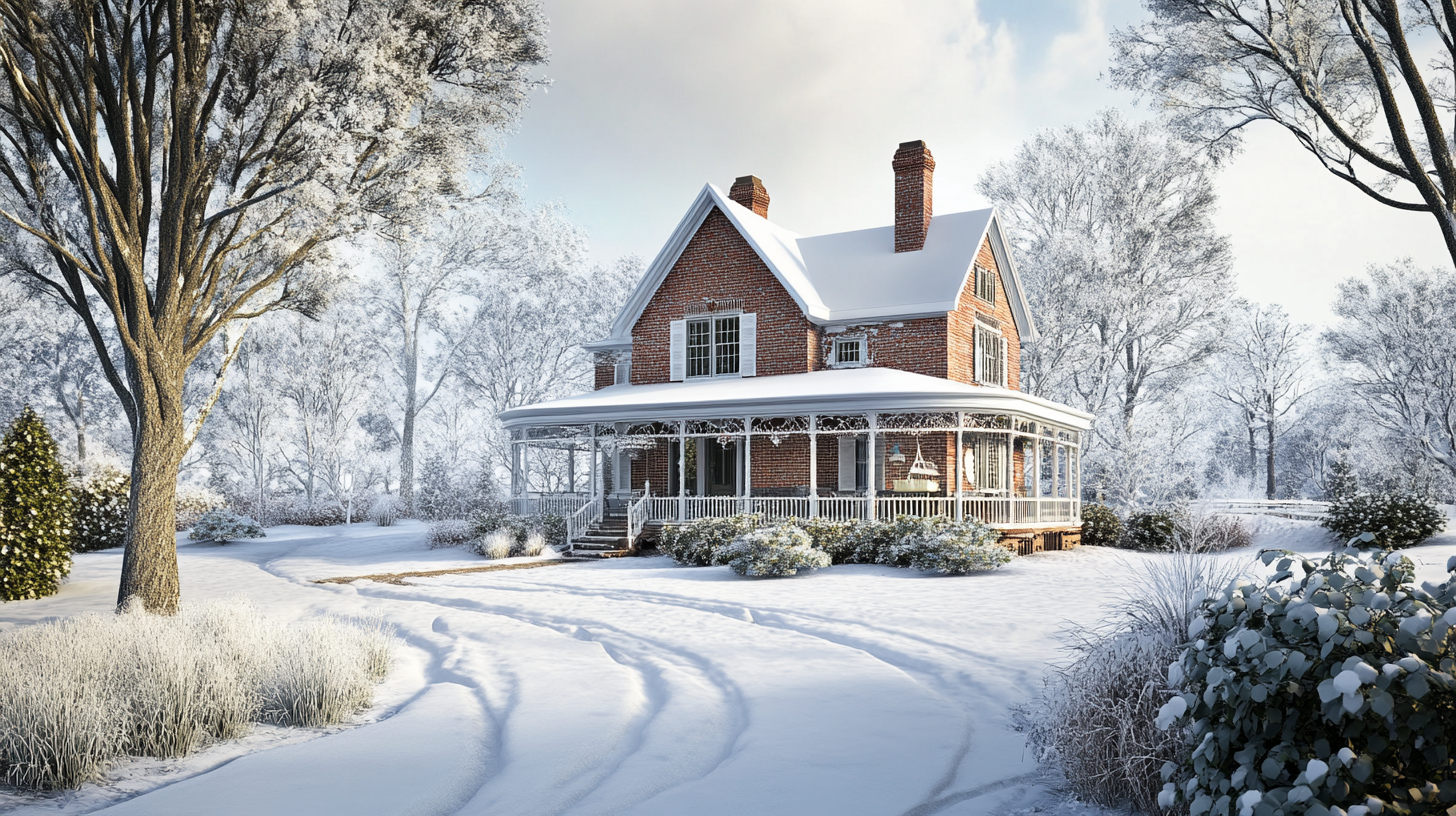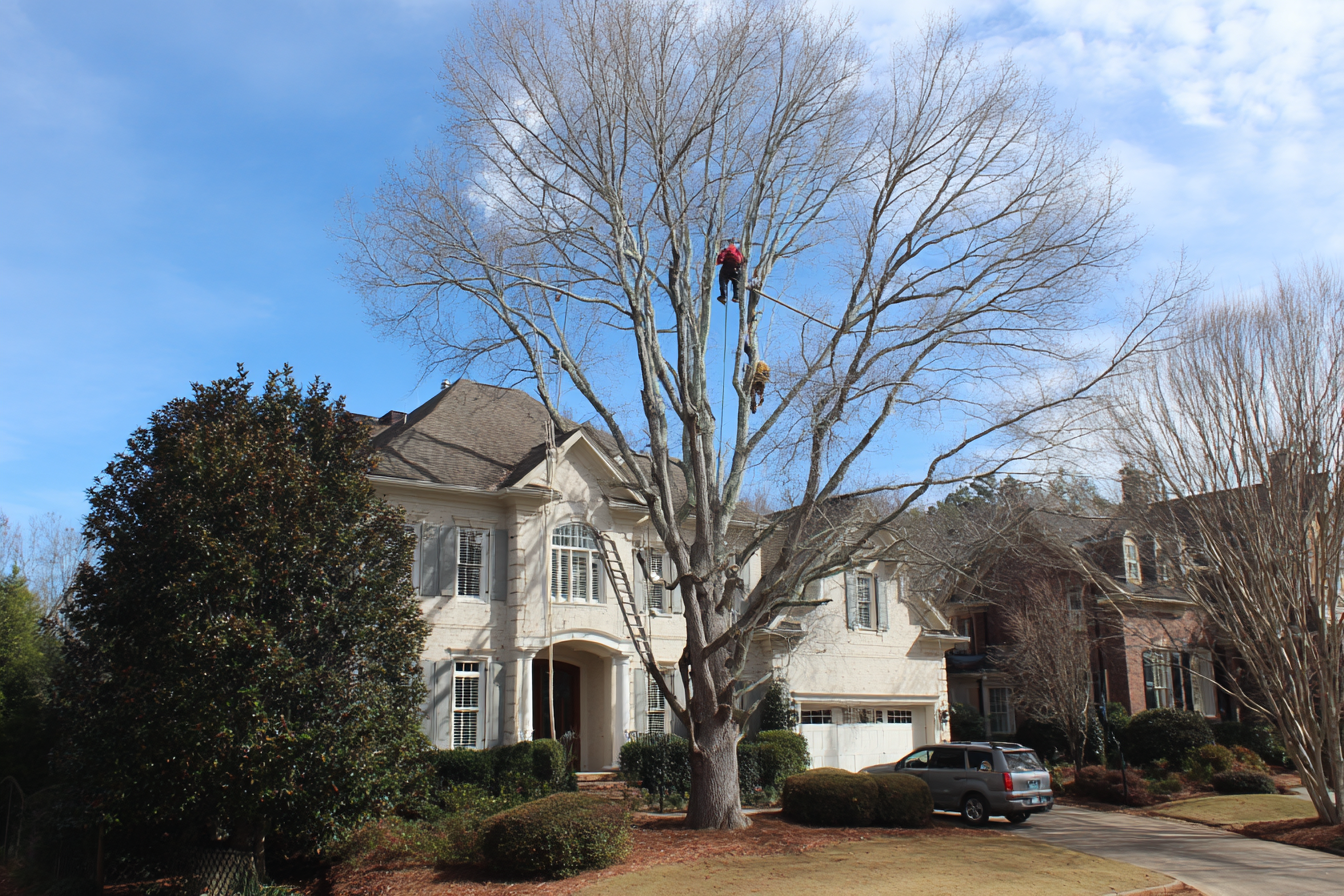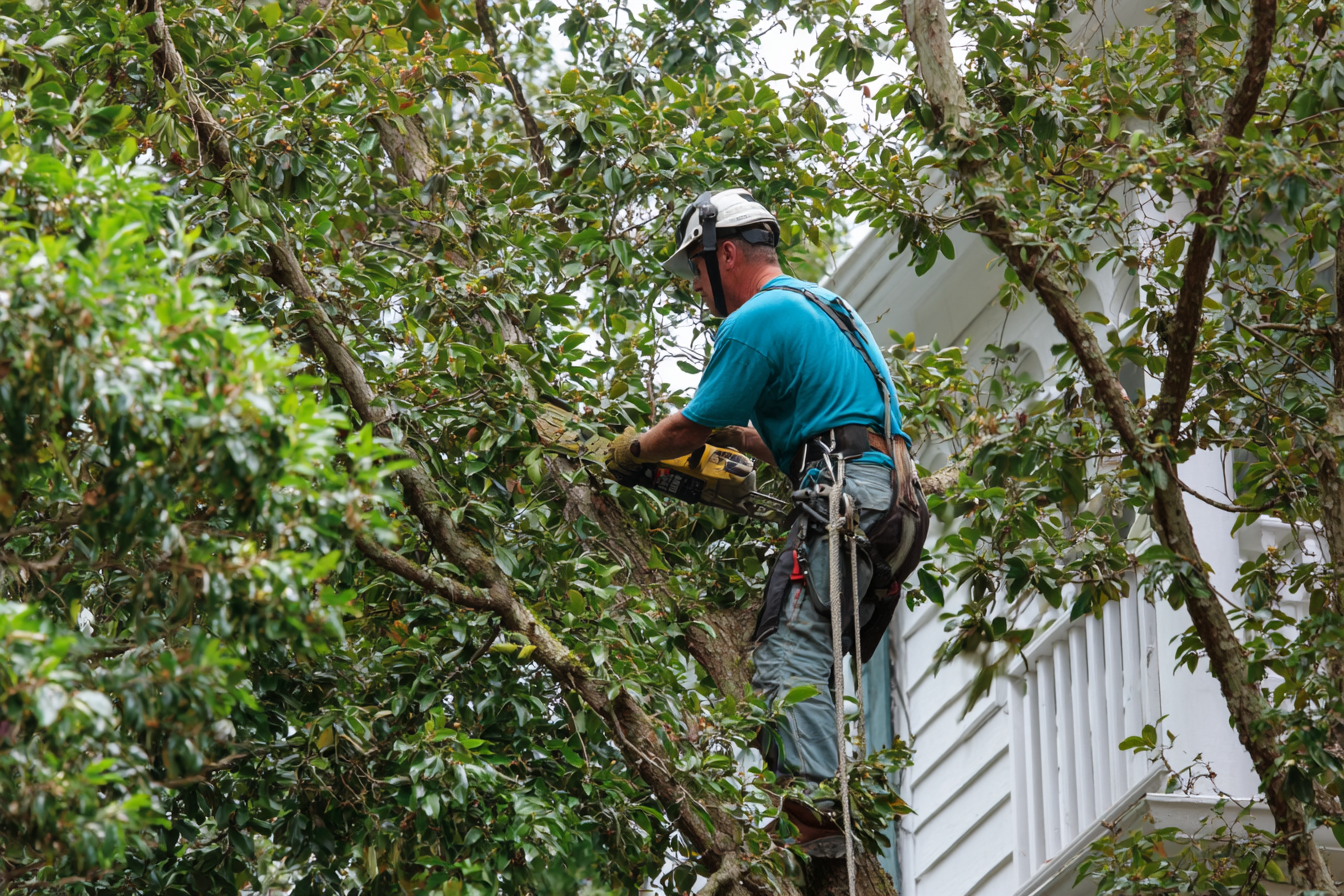Winter Tree Care: How to Protect Your Trees from Cold Weather Damage
Winter tree care is an essential aspect of maintaining the health and beauty of your landscape.

Winter presents a formidable challenge for trees, as they contend with threats such as frost cracks, dehydration, and the physical burden of heavy snow and ice. Each of these factors can significantly affect the health and stability of trees, potentially leading to long-term damage if not addressed. Recognizing the importance of winter tree care allows you to take proactive steps to protect your landscape and preserve the beauty and functionality of your trees.
The Role of a Professional Arborist
A professional arborist is a valuable ally in the quest to maintain healthy trees during the winter months. These experts specialize in understanding the needs of different tree species and can provide tailored care to address specific concerns. From conducting detailed health assessments to implementing strategic protective measures, an arborist's expertise is indispensable for ensuring that trees are well-prepared to withstand winter's challenges. Moreover, their knowledge of local climate patterns and common tree issues can guide you in making informed decisions about your tree care practices.
In addition to offering preventive care, arborists can also assist in emergency situations, such as after a severe storm. They possess the skills and equipment necessary to safely handle fallen branches or damaged trees, minimizing further harm to your property. By building a relationship with a trusted arborist, you gain access to a wealth of knowledge and resources that can enhance the vitality of your trees year-round.

Preparing Your Trees for Winter
Proper preparation is key to ensuring your trees are resilient in the face of winter's harsh conditions. By taking the time to prepare your trees before the first frost, you can significantly increase their chances of weathering the season unscathed. This preparation involves several important steps that contribute to the overall health and strength of your trees.
Pruning for Health and Safety
Pruning is a crucial component of winter tree care, as it helps maintain the structural integrity and health of your trees. By removing dead or weakened branches, you reduce the likelihood of them breaking under the weight of snow or ice, which can cause further damage to the tree and surrounding property. Pruning also improves air circulation within the tree's canopy, reducing the risk of disease spread and encouraging healthy growth.
Performing pruning in late fall or early winter, when trees are dormant, minimizes stress on the tree and promotes faster healing of pruning cuts. It's important to use proper pruning techniques to avoid causing unnecessary harm. In some cases, consulting with a professional arborist can ensure that pruning is done correctly and safely, enhancing the tree's resilience against winter conditions.
Mulching: Nature's Insulation
Mulching serves as an effective natural insulation for trees, providing a protective barrier against temperature fluctuations and moisture loss. By applying a 2-4 inch layer of organic mulch, such as wood chips or bark, around the base of the tree, you help retain soil moisture and regulate soil temperature. This insulation is particularly beneficial during periods of extreme cold, as it shields the tree's root system from freezing conditions.
When mulching, it's important to ensure that the mulch does not come into direct contact with the tree trunk, as this can create a moist environment conducive to disease. Instead, maintain a small gap between the mulch and the trunk to allow for proper air circulation. This simple yet effective practice can significantly enhance the tree's ability to withstand winter's challenges.
Hydration: Watering Before the Freeze
Ensuring your trees are well-hydrated before winter is critical for their survival and health. Trees that enter the winter season with sufficient water reserves are better equipped to endure the dry conditions often associated with winter. Deep watering before the ground freezes helps establish a moisture reserve that the tree can draw upon during periods of drought.
It's important to focus on watering the tree's root zone, where the majority of water absorption occurs. By providing a slow, deep watering, you encourage the development of a robust root system that can support the tree's needs throughout the winter. In regions with particularly dry winters, occasional watering during warm spells can further support your trees' hydration needs.
Protecting Trees During Winter
As winter takes hold, ongoing care and protection are essential to minimize damage to your trees. Implementing specific strategies can help shield your trees from the adverse effects of winter weather and ensure their continued vitality.
Wrapping and Covering
In areas prone to harsh winter conditions, wrapping young or vulnerable trees can provide an extra layer of protection against environmental stressors. Using materials such as burlap or tree wrap, you can shield the bark from sunscald and frost cracks, which occur when the sun warms the bark, followed by a sudden temperature drop. This practice is especially beneficial for newly planted trees or species known to be sensitive to cold.
In addition to wrapping, consider using covers to protect small trees and shrubs from the weight of snow and ice. These covers can be constructed from various materials, including fabric, plastic, or specialized tree protectors. By preventing excessive snow accumulation, you reduce the risk of branches bending or breaking under the strain.
Monitoring and Removing Snow and Ice
Heavy snow and ice can place significant stress on tree branches, potentially leading to breakage or permanent deformation. After a snowstorm, it's important to carefully monitor your trees and take action to relieve the weight of accumulated snow. Gently removing snow from branches with a broom, brushing upward, can prevent additional stress and damage.
When dealing with ice, it's generally best to allow it to melt naturally, as attempting to remove it can cause further harm to the branches. In cases where ice poses a significant threat, consulting with a professional arborist can provide guidance on the safest and most effective course of action.
Preventing Animal Damage
Winter can also bring challenges from wildlife, as animals like deer and rabbits may turn to tree bark as a food source when other options are scarce. This browsing can cause significant damage to trees, potentially leading to long-term health issues. To protect your trees from animal damage, consider installing tree guards or fencing around vulnerable specimens.
Tree guards, made from materials such as plastic or metal, provide a physical barrier that prevents animals from accessing the bark. Fencing can be particularly effective in areas with high deer populations, as it creates a perimeter that deters browsing. By taking these precautions, you can safeguard your trees from the detrimental effects of animal activity.
Common Winter Tree Issues and Solutions
Winter can present a variety of challenges for trees, but being aware of these issues and knowing how to address them is crucial for effective winter tree care. By identifying potential problems early, you can implement solutions that preserve your trees' health and vitality.
Frost Cracks and Sunscald
Frost cracks and sunscald are common winter issues that result from rapid temperature changes. Frost cracks occur when fluctuations in temperature cause the bark to expand and contract, leading to vertical splits in the wood. Sunscald happens when the winter sun warms the bark, only for the temperature to drop suddenly, causing injury to the tissue.
Both issues can be prevented by wrapping vulnerable tree trunks with protective materials, such as burlap or tree wrap. This insulation moderates temperature changes and shields the bark from direct sunlight, reducing the risk of damage. Regular monitoring and timely intervention can further mitigate the impact of these conditions.
Dehydration and Winter Drought
Despite the cold temperatures, trees still require water during the winter months. Dehydration can pose a significant threat, particularly in regions with dry winters, where moisture levels in the soil are low. Ensuring your trees receive adequate water before the ground freezes is a critical step in preventing winter drought.
In addition to pre-freeze watering, consider supplemental watering during warm spells to maintain soil moisture levels. This practice supports the tree's water needs and helps prevent dehydration-related stress. By prioritizing hydration, you can enhance your trees' ability to thrive throughout the winter.
Salt Damage
In areas where de-icing salts are commonly used, salt damage can be a significant concern for trees located near roads or walkways. Salt can lead to dehydration and leaf burn, negatively affecting tree health. To mitigate salt damage, consider using alternative materials like sand or cat litter for traction on icy surfaces.
Creating physical barriers, such as burlap screens or fencing, can also protect trees from salt spray. By diverting salt away from the tree's root zone and foliage, you reduce the risk of exposure and subsequent damage. These proactive measures can help preserve the health and appearance of your trees in salt-affected areas.

The Benefits of Professional Arborist Services
Engaging the services of a professional arborist for winter tree care offers numerous advantages. Arborists possess the expertise and experience necessary to diagnose and address tree issues effectively, ensuring your trees receive the best possible care throughout the winter months.
Regular Inspections and Maintenance
Regular inspections by a professional arborist provide valuable insights into the health and stability of your trees. Through comprehensive assessments, arborists can identify potential risks and recommend appropriate maintenance tasks, such as pruning, cabling, and bracing. These interventions enhance tree stability and resilience, reducing the likelihood of damage during winter storms.
Arborists also offer ongoing support, addressing any issues that arise and providing guidance on best practices for winter tree care. By maintaining a proactive approach, you can ensure your trees remain healthy and robust, even in the face of winter's challenges.
Expert Advice and Solutions
Arborists provide expert advice on a wide range of tree care and protection strategies, tailored to the specific needs of your landscape. They can recommend suitable tree species for your area, taking into account local climate conditions and potential winter challenges. Additionally, arborists offer solutions to address specific issues your trees may encounter, such as pest infestations or nutrient deficiencies.
By partnering with a professional arborist, you gain access to a wealth of knowledge and resources that support the long-term health and beauty of your trees. Their expertise ensures that your trees receive the care they need to thrive, both during the winter months and throughout the year.
Conclusion: Ensuring Healthy Trees All Year Round
Winter tree care is an essential aspect of maintaining the health and beauty of your landscape. By taking proactive measures and enlisting the help of a professional arborist, you can effectively protect your trees from cold weather damage and ensure they thrive year after year. With proper preparation and ongoing care, your trees will emerge from winter strong and ready to flourish in the spring.
Investing in winter tree care not only preserves the aesthetic appeal of your property but also contributes to the overall health and longevity of your trees. By nurturing your trees through the challenges of winter, you lay the foundation for a vibrant and thriving landscape that can be enjoyed for generations to come.
Contact Georgia Pro Tree Services for Expert Winter Tree Care
Don't leave your trees' health to chance this winter! Contact Georgia Pro Tree Services today to schedule a consultation with our professional arborists. Our team is dedicated to providing expert advice and tailored solutions to ensure your trees thrive throughout the cold months.
Contact us now to learn more about our winter tree care services and how we can help protect your landscape. Your trees deserve the best care—let us help you achieve that!

We're your local tree pros!
Georgia Pro Tree Services takes the highest quality of care when servicing your trees. Call us to find out how we can help you keep your yard in top shape.



